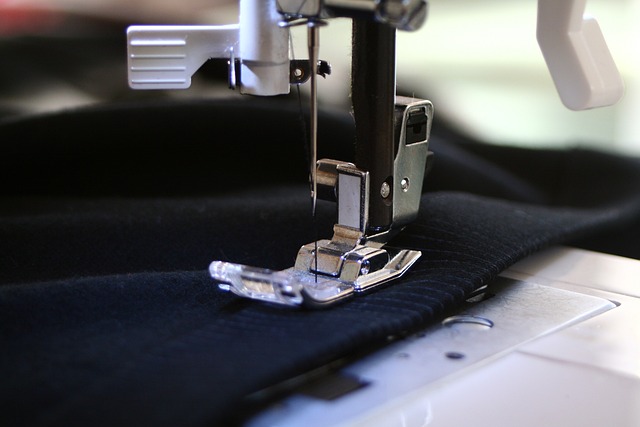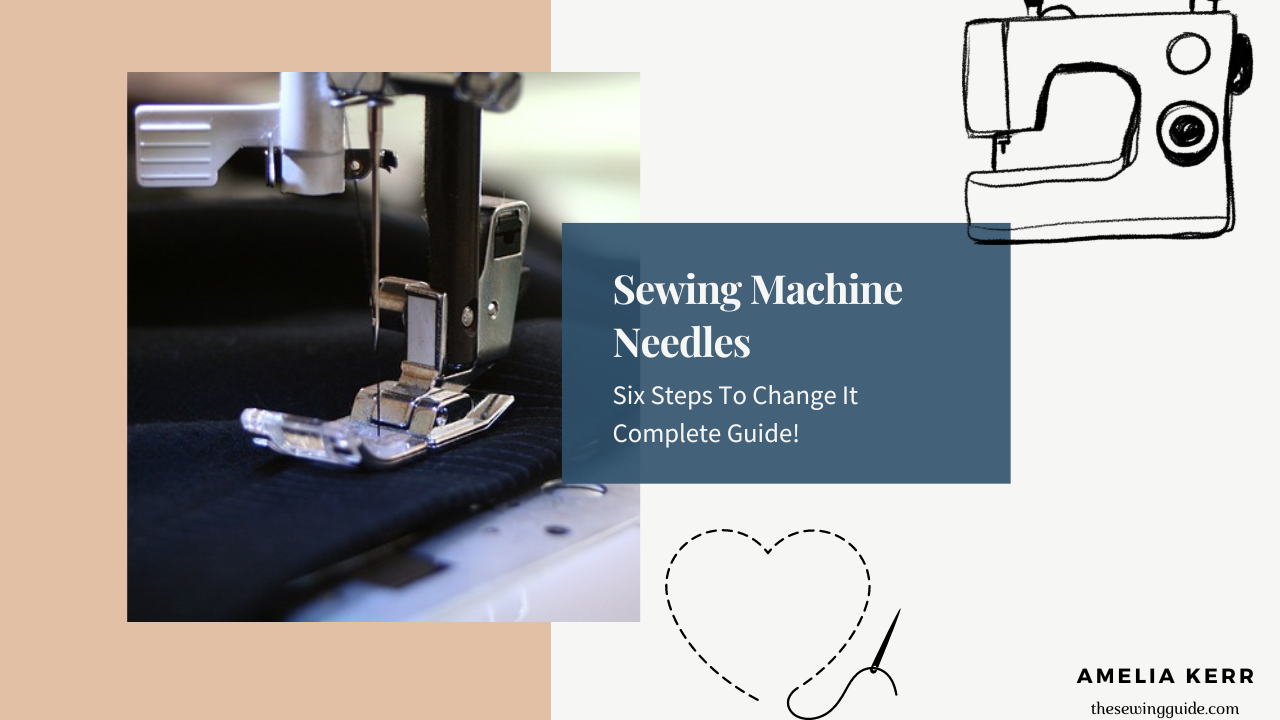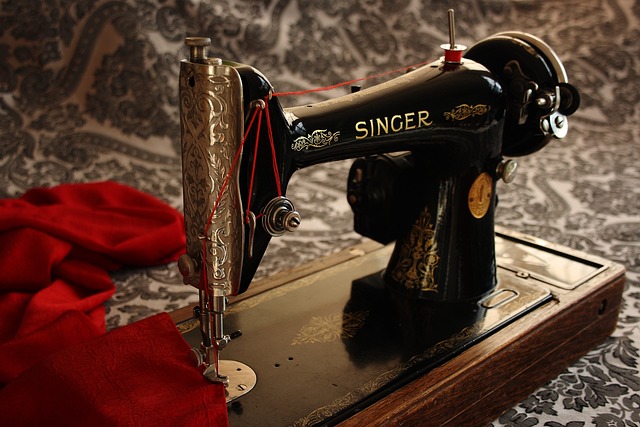Over the years, I’ve threaded countless needles, sewn a myriad of fabrics, and troubleshooted more sewing machine glitches than I can recall. Through all these experiences, one thing has remained constant: the paramount importance of a sharp, well-fitted needle. If there’s one thing I’ve learned, it’s that a perfect stitch begins with the right needle. Today, I’m sharing my tried-and-true method for replacing a sewing machine needle. Whether you’re a seasoned tailor or a passionate beginner, following my step-by-step guide will ensure your sewing projects remain seamless and snag-free. Let’s dive in and set the foundation for impeccable sewing craftsmanship.
Recognizing the Right Time: When to Change Your Sewing Machine Needle
Before we delve into the nitty-gritty of the needle replacement process, it’s imperative to understand when to make that change. An impeccable stitch is not just about the technique, but also about using equipment in its prime condition.
- Frequency of Use: As a rule of thumb, if you sew regularly, it’s advisable to change the needle after every 8-10 hours of stitching. For occasional sewers, changing it after completing each project should suffice.
- Type of Fabric: Rough or thick materials, such as denim or canvas, can dull a needle faster. If you’re frequently working with these fabrics, consider changing the needle more often.
- Quality of Stitches: A clear sign that your needle needs replacement is the quality of your stitches. If you start to notice uneven stitches, skipped stitches, or thread breakage, it might be time to evaluate your needle.
- Visible Damages: Occasionally, inspect your needle for signs of wear, bending, or burrs. Even a slight imperfection can hinder its performance.
- Sound: Trust your ears. If the machine begins to make a different sound, particularly a thumping noise as the needle penetrates the fabric, it’s an indication that the needle is dull and needs replacing.
Understanding these signs ensures that your machine operates efficiently, your fabrics remain damage-free, and your projects exude professional quality. After all, in the world of sewing, it’s the small details that make a world of difference.
How to Change a Sewing Machine Needle in 6 Easy Steps

Replacing a needle may seem daunting, but with the right guidance, it’s a breeze. As someone who has threaded countless machines, let me break down the process for you in six straightforward steps:
- Safety First: Before anything else, turn off your sewing machine. This not only ensures your safety but also gives you a stable environment to work in.
- Remove the Old Needle: Hold the needle with one hand (using a needle gripper if available) to stabilize it. With your other hand, turn the handwheel towards you to raise the needle to its highest position. Loosen the needle clamp screw, which is usually on the right side of the needle, using either your fingers or a screwdriver. Gently pull the needle down to remove it.
- Identify the Flat Side: Most sewing machine needles have a flat side, which helps in correct orientation during installation. It’s crucial to know which side this is, as your machine might require the flat side to face either the back or one of the sides.
- Insert the New Needle: Holding the needle by its shaft with the flat side in the correct orientation, slide it upwards into the needle clamp. Ensure it goes up as far as it can.
- Secure the Needle: Tighten the needle clamp screw firmly, ensuring the needle is held securely in place. Be careful not to overtighten, as this can damage the clamp.
- Double Check: Rotate the handwheel towards you, letting the needle descend and rise again. This ensures that the needle is correctly installed and moves freely without any obstructions.
Voilà! You’ve successfully changed your sewing machine needle. Regularly changing and ensuring the right needle type for your fabric can drastically improve the quality of your stitches, making every sewing project a masterpiece.
Make Sure Your Needle is in the Correct Place
While successfully inserting a new needle is a significant achievement, ensuring its correct placement is pivotal for optimal sewing performance. A misaligned needle can result in skipped stitches, fabric damage, and might even harm your sewing machine. Here’s how to ascertain that your needle sits perfectly:
- Correct Height: After inserting your needle, the tip should rest just above the hole of the needle plate. If it’s too high or too low, you’ll need to adjust its position.
- Flat Side Alignment: As mentioned earlier, most sewing machine needles have a flat side. Depending on your machine model, this flat side should typically face the rear or one side. Always refer to your sewing machine’s manual to ensure you’ve got the orientation right.
- Straight and Not Bent: Even a brand-new needle can sometimes be bent or damaged during production or shipping. Before installing, roll the needle on a flat surface. If it wobbles, it’s bent, and you should not use it.
- Needle Clamp Security: Once the needle is in place, the needle clamp should hold it firm. It shouldn’t wiggle or move from side to side. A loose needle can shift during sewing, leading to a host of issues.
- Handwheel Test: Turn the handwheel slowly and watch the needle go through its full motion. It should move smoothly without hitting any part of the sewing machine. If it touches or scrapes, recheck its alignment and position.
- Threading Appropriately: Once your needle is correctly placed, ensure you thread it correctly. Incorrect threading not only affects stitch quality but can also misalign your needle over time.
Mastering the subtleties of needle placement may seem meticulous, but it’s these small details that set apart a flawless stitch from a mediocre one. By ensuring your needle is perfectly positioned, you set the stage for seamless sewing sessions ahead.
Choose the Right Needle for Your Project

Selecting the appropriate needle for your sewing endeavor is just as crucial as its placement. The needle’s type and size can dramatically impact the outcome of your project. Using the wrong needle can lead to broken threads, skipped stitches, or even damaged fabrics. Let’s delve into the various types of sewing machine needles and their ideal usage:
- Universal Needles: These are jack-of-all-trades needles suitable for a variety of fabrics, both woven and knit. Ideal for general sewing purposes, they have a slightly rounded point and come in a range of sizes.
- Ballpoint Needles: Tailored for knits and stretch fabrics, ballpoint needles have a rounded tip that pushes fabric fibers apart instead of piercing them, preventing damage.
- Sharps: These needles have a slender body and a very fine, sharp point. They’re perfect for delicate fabrics like silk, tulle, and lightweight synthetics, ensuring clean stitches without fabric damage.
- Jeans/Denim Needles: As the name suggests, these are designed for heavy fabrics like denim, canvas, and twill. They have a thick, strong shaft and a slender body, enabling them to penetrate dense fabrics without breaking.
- Quilting Needles: Specifically designed for quilting, they have a tapered point that easily pierces multiple layers of fabric, making them perfect for both machine and hand quilting.
- Embroidery Needles: These come with a larger eye, allowing for specialty embroidery threads to pass through without fraying or breaking.
- Metallic Needles: For those who sew with metallic threads, these needles come with a larger, elongated eye and a deep groove to prevent the delicate thread from shredding.
- Leather Needles: Tailored for leather, vinyl, and suede, these needles have a slight cutting point, which makes a clean hole as they penetrate the material.
Choosing the Right Size: Sewing machine needles also come in various sizes. The general rule is to match the needle size with the fabric weight. For lightweight fabrics, use a smaller needle (sizes 8-10), medium-weight fabrics are best suited with sizes 11-14, and for heavier fabrics, opt for larger needles (sizes 16-18).
Remember, the key to a successful sewing project lies not just in skill but also in using the right tools. Ensuring that you have the correct needle for your fabric type and weight is a simple yet crucial step in achieving impeccable results.
Frequently Asked Questions
1. How often should I change my sewing machine needle?
The frequency of changing your needle depends on your usage. If you sew regularly, it’s recommended to change the needle after every 8-10 hours of stitching. For occasional sewing, changing it after each project should suffice. Heavy fabrics like denim can wear out a needle faster, so consider changing it more often when working with such materials.
2. Can I use the same needle for all types of fabrics?
No, different fabrics require specific needle types to ensure optimal stitching. For instance, delicate fabrics like silk need sharp needles, while knits and stretch fabrics benefit from ballpoint needles. It’s essential to choose the right needle for the fabric you’re working with to achieve the best results.
3. How can I tell if my needle is dull or damaged?
A dull or damaged needle can cause skipped stitches, uneven stitches, or even fabric damage. Some signs include a thumping sound as the needle penetrates the fabric, visible damages or bending of the needle, or thread breakage. You can also roll the needle on a flat surface; if it wobbles, it’s likely bent and needs replacing.
4. Do all sewing machines use the same type of needles?
While many sewing machine needles are standardized, some specialized machines or older models may require specific needle types. Always refer to your sewing machine’s manual or consult the manufacturer to ensure you’re using the correct needles for your machine.
Conclusion
Sewing, like any other art form, requires not just passion but also the right knowledge of tools and techniques. Through my many years of sewing, I’ve learned that sometimes it’s the little details, like the correct needle, that can make all the difference between a project that’s simply good and one that’s truly outstanding.
Thank you for taking the time to read this guide. I hope the insights and tips I’ve shared, culled from years of experience, empower you on your sewing journey. Remember, every stitch you make tells a story, so ensure you’re equipped with the best tools to tell yours beautifully.

I love sewing, I am sewing for the last 15 years and started this blog with the help of my niece to spread sewing-related guides all over the world.
Sewing could be a full-time profession or hobby, and I wish to make a change by adding more people to the sewing world.

